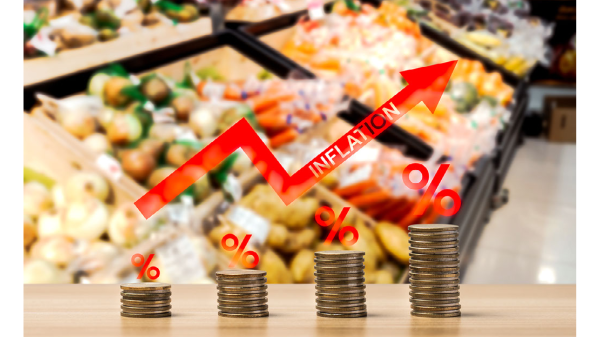Inflation has eased since 2022 and 2023, but American consumers continue to be concerned about the increasing price of everything, especially food.
As for food, consumers are justified in their concern.

The Wall Street Journal reported last week that food prices as a percent of consumers disposal income are as high as they’ve been in 30 years.
Quoting USDA data, WSJ said consumers spent 11.4 percent of their disposable income on food in 1991, and the last data reported in 2022 shows consumers spent 11.3 percent.
The U.S. Labor Department’s January inflation report shows food away from home was 5.1 percent higher than January 2023, while food at home was just 1.2 percent higher than a year ago.
Fresh fruits and vegetables only posted a 0.6 percent rise in January 2024 vs. 2023, while fresh fruit was 1.9 percent higher year-over-year, and vegetables were down -0.9 percent year-over-year.
A problem for consumers is that food prices may never come down.
“If you look historically after periods of inflation, there’s really no period you could point to where [food] prices go back down,” said Steve Cahillane, chief executive of snack giant Kellanova, told the Journal. “They tend to be sticky.”
Deloitte released a study showing 73 percent of U.S. consumers remain concerned about inflation in January, which is only slightly down from its high of 83 percent in the summer of 2022, when inflation was at its highest of the last four years at 9.1 percent.
Because of this concern, Deloitte says Americans’ spending intentions have not recovered from pre-inflation levels.
“Despite low unemployment, GDP growth, and solid retail sales numbers, financial and geopolitical anxiety weigh heavily on the U.S. consumer’s psyche,” says Stephen Rogers, managing director, Deloitte Consumer Industry Center.
“After navigating inflation for two-plus years, consumers’ price expectations are moving slower than moderating inflation rates. Their intention to pull back on nondiscretionary items like groceries underscores the price fatigue and anxiety U.S. consumers feel. Business leaders should adjust their strategies to help rekindle profitable loyalty and volumes.”
Both grocery retailers and foodservice companies face a weary and pessimistic consumer base.
Low prices and value are as attractive a pitch as ever, and it may be that way for a while.



